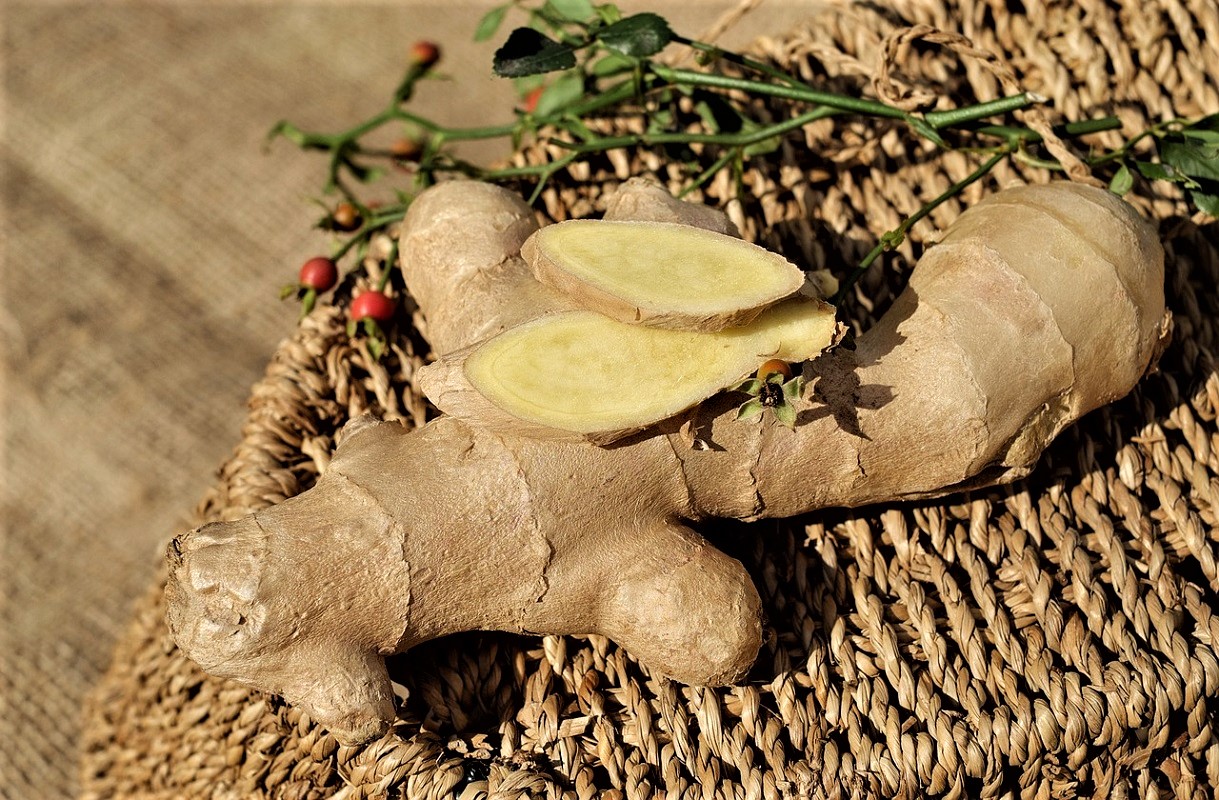Agencia Peruana de Noticias PRENSAPERU.PE https://prensaperu.pe Twitter: @prensaperupe Entre enero y noviembre del 2021, los envíos de jengibre peruano (kion) al exterior sumaron alrededor de US$ 81 millones 200 mil, sufriendo una caída de -13.4% respecto al mismo periodo del 2020, indicó el Centro de Investigación de Economía y Negocios Globales de la Asociación de Exportadores (CIEN-ADEX).
El descenso del año pasado fue por el menor precio debido a los mayores volúmenes de jengibre de China, el cual reanudó sus despachos luego de una baja en el 2020. A ello se sumó el incremento de la oferta de India y Tailandia.
Este producto llegó a 42 naciones cuyo ranking fue liderado por EE.UU. (US$ 39 millones 118 mil) que logró una variación positiva de 4% y representó el 48%. En 2° lugar estuvo Países Bajos con US$ 20 millones 528 mil (-41%) y en el 3° Canadá con US$ 3 millones 886 mil (-6%). Completaron el top 15 España, Alemania, Rusia, Reino Unido, México, Italia, Corea del Sur, Chile, República Dominicana, Ucrania, Emiratos Árabes y Brasil.
PERÚ TERCER LUGAR
Según la nota de Inteligencia Comercial del CIEN-ADEX, en el 2020 China con US$ 718 millones 500 mil fue el primer exportador mundial de kion, concentrando el 52.9% del total. Países Bajos (US$ 155 millones 600 mil) se posicionó en el segundo y Perú (US$ 105 millones 600 mil) en el tercero.
El jengibre fresco fue su presentación más importante (91.9% de participación), seguido del deshidratado (3.8%), jugo (3.6%) y en polvo (0.7%). Asimismo, se registró exportaciones de puré, jengibre confitado e infusiones, los cuales representaron de forma conjunta el 0.03%.
Asimismo, del total de jengibre peruano despachado a los mercados internacionales, un mayor porcentaje fue orgánico y se espera que esa tendencia se mantenga debido al creciente consumo de los consumidores de América del Norte y Europa. En el 2020 la exportación del orgánico creció 206.4% y del convencional 102.5%.
VARIEDAD
Actualmente se observa una mayor presencia de productos de jengibre (con valor agregado) en EE.UU. y naciones europeas. En el primero se comercializan bebidas, mermeladas y caramelos a base de kion y mezclas con cítricos. En el Viejo Continente se venden los ligados a la higiene y cuidado personal como shampoo, tinte para cabello y aceites esenciales de jengibre combinado, por ejemplo, con lavanda.
Cabe resaltar que también se encuentran en el mercado puré, confitado e infusiones. Su uso se extiende no solo a la industria alimentaria y la gastronomía, sino al rubro de saborizantes, farmacéutico, perfumería y aromatizantes.
DATOS
La principal región productora de este superfood en el Perú es Junín.
Los primeros importadores globales en el 2020 fueron EE.UU. con US$ 173 millones 400 mil (12.2% del total), Países Bajos U$ 150 millones 200 mil (10.5%) y Japón US$ 106 millones 800 mil (7.5%)
Fuente: Agencia Peruana de Noticias PRENSAPERU.PE https://prensaperu.pe Twitter: @prensaperupe
English translation
ADEX indicated that exports of Peruvian ginger (kion) fell -13.4% as of November 2021.
Peruvian News Agency PRENSAPERU.PE https://prensaperu.pe Twitter: @prensaperupe Between January and November 2021, shipments of Peruvian ginger (kion) abroad totaled around US$ 81,200,000, suffering a fall -13.4% compared to the same period in 2020, indicated the Center for Research on Global Economy and Business of the Association of Exporters (CIEN-ADEX).
Last year’s decline was due to lower prices due to higher volumes of ginger from China, which resumed shipments after a drop in 2020. Added to this was the increase in supply from India and Thailand.
This product reached 42 nations whose ranking was led by the US (US$ 39 million 118 thousand) which achieved a positive variation of 4% and represented 48%. In 2nd place was the Netherlands with US$ 20,528,000 (-41%) and in 3rd place, Canada with US$ 3,886,000 (-6%). Completing the top 15 were Spain, Germany, Russia, the United Kingdom, Mexico, Italy, South Korea, Chile, the Dominican Republic, Ukraine, the United Arab Emirates and Brazil.
PERU THIRD PLACE
According to the CIEN-ADEX Commercial Intelligence note, in 2020 China with US$ 718,500,000 was the world’s leading exporter of ginger, concentrating 52.9% of the total. The Netherlands (US$ 155 million 600 thousand) was positioned in the second and Peru (US$ 105 million 600 thousand) in the third.
Fresh ginger was its most important presentation (91.9% share), followed by dehydrated (3.8%), juice (3.6%) and powdered (0.7%). Likewise, exports of puree, candied ginger and infusions were registered, which jointly represented 0.03%.
Also, of the total Peruvian ginger shipped to international markets, a higher percentage was organic and this trend is expected to continue due to the growing consumption of consumers in North America and Europe. In 2020, organic exports grew 206.4% and conventional 102.5%.
VARIETY
There is now an increased presence of (value-added) ginger products in the US and European nations. In the first, drinks, jams and candies based on ginger and mixtures with citrus fruits are sold. In the Old Continent, those linked to hygiene and personal care are sold, such as shampoo, hair dye and essential oils of ginger combined, for example, with lavender.
It should be noted that puree, candied and infusions are also on the market. Its use extends not only to the food industry and gastronomy, but also to the field of flavorings, pharmaceuticals, perfumery and flavorings.
DATA
The main producing region of this superfood in Peru is Junín.
The first global importers in 2020 were the US with US$ 173.4 million (12.2% of the total), the Netherlands with US$ 150.2 million (10.5%) and Japan with US$ 106.8 million (7.5%).
Source: Peruvian News Agency PRENSAPERU.PE https://prensaperu.pe Twitter: @prensaperupe
